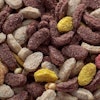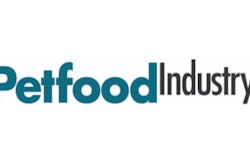
Four trends that pet food consumers increasingly look for on natural pet food labels were identified by Maria Lange, business group director of GfK. She suggested that these trends could shape the next generation of natural pet food.
Natural pet foods have become the base of the pet food industry, Lange said during her presentation at Petfood Forum 2017. With so many pet food labels promoting products as natural, the challenge is to differentiate those natural dog and cat foods from each other.
“There are a bunch of other or new natural labels that are emerging in the industry that seem to shape the next level in the industry,” Lange said. “All of these are talking about where is the food coming from, what was the animal’s life like during the production process, what am I supporting. It’s becoming more of what is the brand all about and what are you supporting.”
This article is part of a Petfood Industry series that explores labeling issues.
Another article in the series:
1. Sustainable
As pet owners have become more aware of the effects of pet food on their animals, so to have they become aware of their pet food’s effect on the planet. Numerous certification system, such as the Marine Stewardship Council sustainable seafood initiative, can give consumers peace of mind that future generation of people and pets may enjoy the same quality of life as current generations.
Demand for sustainable pet food ingredients seems to be a global phenomenon. In Brazil, 69 percent of pet food consumers said in a survey that they look for sustainable ingredients claims on pet food labels, with 66 percent saying the same in Mexico, said Armando Enriquez de la Fuente, technical commercialization manager for ingredient supplier DSM. Enriquez said this during his presentation at the Septimo Foro México sobre Alimento para Mascotas Internacional (Seventh International Mexican Pet Food Forum) in Guadalajara, Jalisco, Mexico.
Among European pet food buyers in another survey, sustainably sourced ingredients were rated as having higher importance than grain-free claims, cost, brand and country of origin, Sarah-Jane Godfrey, technical marketing manager for DSM, said at Petfood Forum Europe 2017 in Cologne, Germany.
2. Humane
Pet food consumers are also more concerned about the lives of the animals used to make the food, Lange said. People increasingly want to know that the husbandry practices on livestock farms meet their ethical standards, before they or their pets will buy a foods containing meat.
3. Family Owned
“One trend that were seeing as well is brands that are really showing that they are a family-owned business that has been around for a long time,” Lange said. “It creates this feeling in the customer that they are suporting a tradition, that they are supporting a family as opposed to a big corporation. It creates this feeling of comfort, feeling good that you are supporting something good.”
Promoting the family roots of a pet food brand also personalizes the brand, Lange’s slide noted. Also family-owned brands may help pet food buyers feel like they are supporting something local.
4. Organic/ Non-GMO
Like the other rising trends, consumer demand for organic and non-GMO pet food ingredients stems from a belief that these farming techniques are inherently better for the environment. Likewise, consumers tend to perceive organic and non-GMO pet food ingredients as healthier for their dogs and cats, since no synthetic pesticides, herbicides or fertilizers are used.
Challenges to meeting natural pet food ingredient demand
Finding a steady, affordable supply of novel pet food ingredients that meet the specific criteria of particular types of natural pet food can challenge pet food formulators, Robert Lee, vice president of operations for American Nutrition, told Petfood Industry.
“You need to really know the scale of your supply,” said Lee. “Especially if you’re going to do both natural and Made in the USA…You don’t want to be the hottest thing flying off the shelf, then not be able to replenish the shelf.
“You want to be able to make strong claims and some kind of differentiation between you and the brand next to you, but supply has to be part of the consideration process,” Lee said.
Petfood Forum
Maria Lange presented her analysis of rising natural pet food labeling trends at Petfood Forum. Petfood Forum provides an opportunity for pet food professionals from around the world to network, exchange ideas and do business with one another and with the industry's leading pet food manufacturers and suppliers.

















